February is the season of silent and beautiful snowscapes in Southern Japan. It’s also one of my favourite “off-season” months to visit Japan, avoiding the crowds, stepping off the beaten track and capturing beautiful scenes (both natural and human) with an SLR lens.
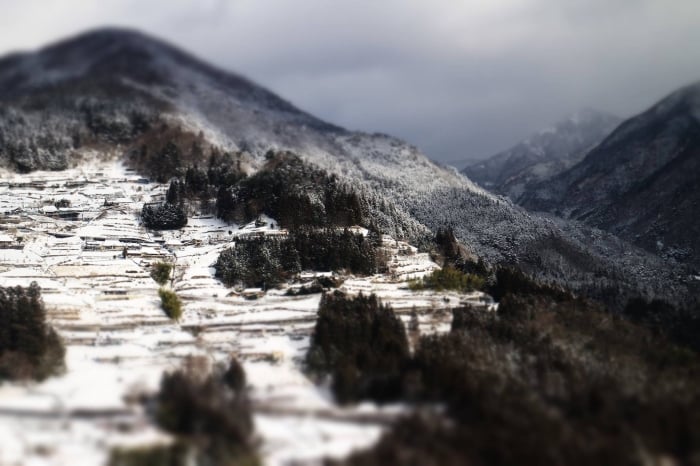

Inland Shikoku (southwest of Honshu) is less visited than most other regions of Japan. Iyakei region, or Iya valley, located in Tokushima prefecture is relatively easy to reach, and an easy stop-over destination between the cities of Takamatsu (in the north) and Kochi (in the south). The wintry gorges and steep mountains sugar-dusted in snow are fantastic to see from afar and near.
What to see in Shikoku
My local taxi guide of the day (you can join a day tour in a van from Oboke train station for ¥3,000) shared his local knowledge of the area and its history. It’s understood from records that the Heike clan had settled here following a defeat with the Minamoto clan in the 12th century, re-settling as farmers. The medieval period of Japan is often seen as a romantic period of history; when the way of the warrior (bushido) started, when recitals and poems based on Buddhism flourished, and when love stories and poems were written in the most sentimental manner. As such, although the Heike clan’s fall was an example of the fleeting nature of fortune, local legend says that the head of the fallen Heike clan was not killed, and had survived battles and attempted assassinations, enabling direct descendants to live anonymously to this day in the valley.
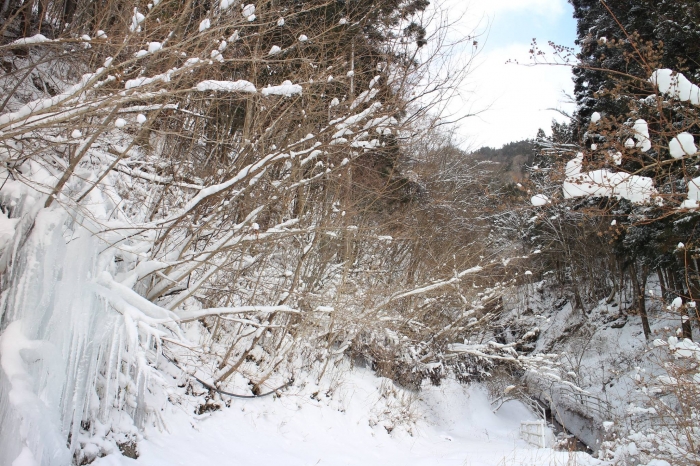
On local nature, the guide pointed out that much of the trees that grow on the steep gorges were introduced for timber purposes – although the trees are now redundant for this use. He pointed out that they can become a nuisance in spring due to heavy pollination, inducing and aggravating hay fever across the towns and villages in the region. I had to admit that the forested mountain roads and gorges were most prettiest where the original trees and bushes stood still. They allowed for more snow to settle on their bare branches, some allowing for snow to look like cotton wool, for icicles to form, and for moss to grow on its trunks and roots.The original woodlands also provided much more food and cover for local wild animals.
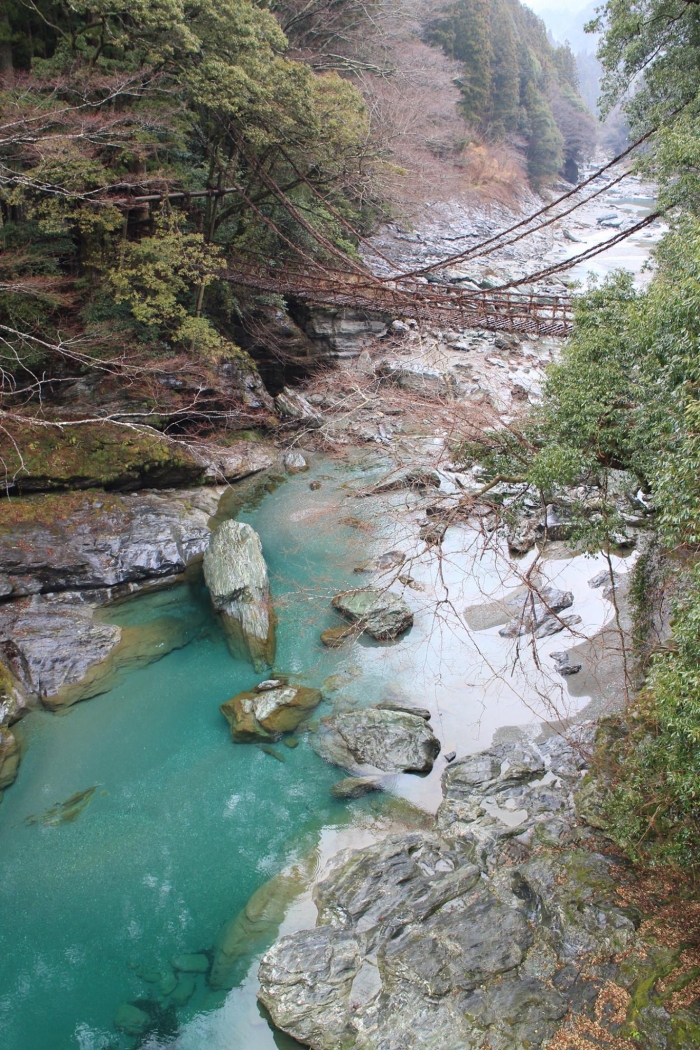
Kazurabashi, one of the vine bridges that cross the many valleys in the region, is probably a must-see in the area. It costs ¥550 to cross the bridge. Slightly challenging when wet, the bridge provides a little spectacle for the travellers who venture here. But what captured me more was the underlying river and its hues of mineral blue. You can carefully get down to the riverbed from the banks, to pause and gaze at the clear water and let your eyes follow where it travels, listening quietly to the trickling of water, and the serene shades of blue twisting and changing in depth and colour between the rocks.
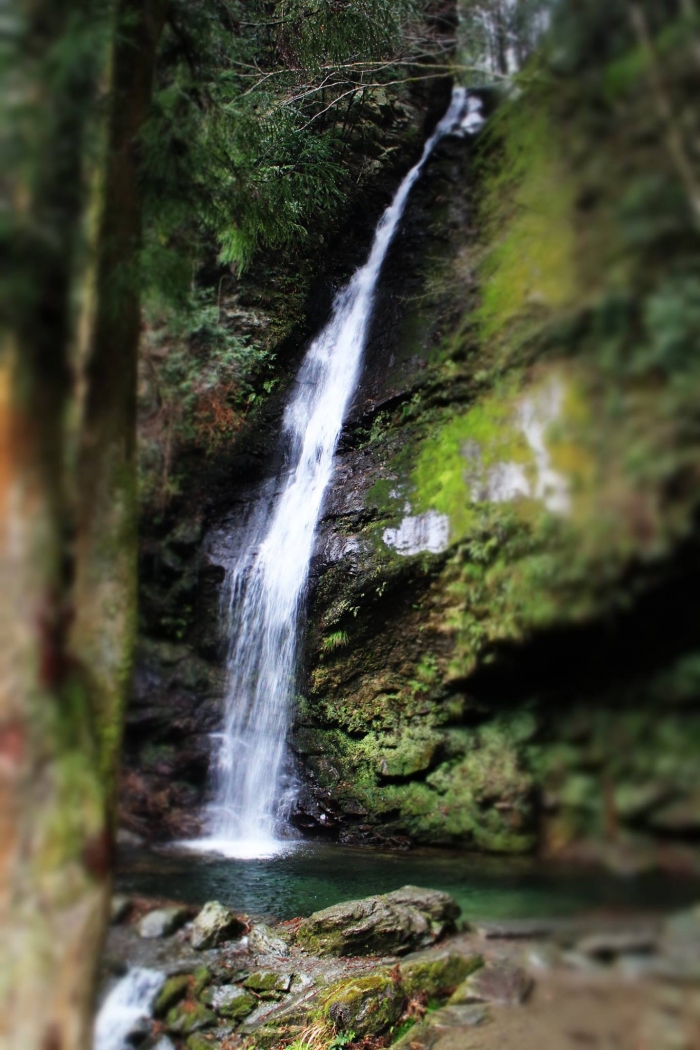
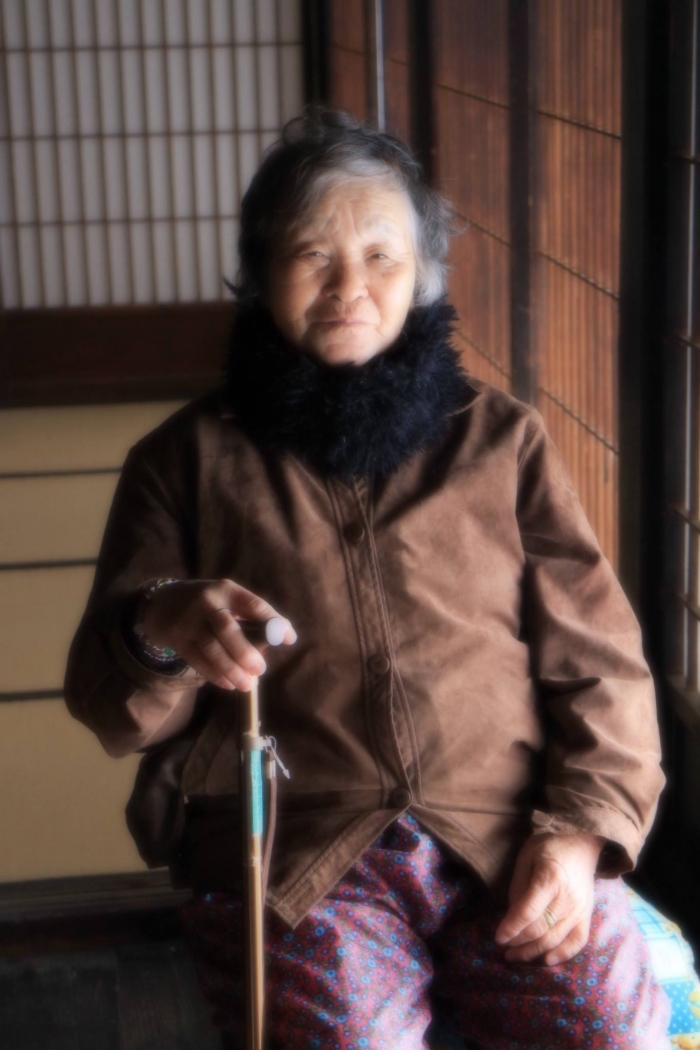
The tour also included stops at some waterfalls, a local heritage site with farming ridges, traditional cottages with hay roofs and consequently meeting the resident grandmas who are guardians of these heritage homes. I found these homes to be extremely peaceful despite zero insulation and the stiff cold. The wood felt smooth and cool beneath your socks, and it was easy for the imagination to flee and feel the energy left from generations of the past centuries, living simple yet hard lives, trying to do their best with the seasons that come and go. The guardian grandmas were well trained in having pictures taken and were perfect photo subjects. I insisted I took a picture with my new found friend (my taxi driver) who had previously commented about travel:
“I’d love to see what’s outside of this island, but you know, it’s always beautiful here every season, and I like finding new and small discoveries… So I thought best to see the new things here and see the world through the TV screen.”
What to do in Shikoku
This valley area is full of small natural and beautiful discoveries, and this is not the place to tick-box world heritage sites. Instead, it is the perfect location to simply enjoy a couple of sites so you can spend time absorbing the fresh air, the landscape surrounding you and to stop and eat local delicacies.

The next day I went on a small boat tour in Ooboke valley, where I found out that the hues of blue are caused by the local grey-blue sedimentary rocks which become eroded by flowing water. Over time the minerals from the rocks dissolve into the river water, creating distinct blue tones. It was only possible to see such distinct colours in the highlands, as silt clouded the mineral colours when the rivers travelled further toward the sea. It didn’t matter if there was sharp winter daylight or the soft lighting from a cloudy day, the shades of marine blue were captivating.
There are many photo opportunities here, and locals are quick to point out all the mini-attractions and potential viewpoints in the area. After a day spent in the cold, the best thing to do was to rest in a ryokan (travel inn – of which there are plenty in the region) and soak yourself warm in an onsen; preferably with both indoor and outdoor baths so you can feel the cold breeze and snow fall whilst you bathe.
As with any good ryokan, there are numerous local delicacies presented in small bowls and hot pots for supper and breakfast, and it’s most likely you’ll get grilled river fish amongst other wonderful assortments. Aside from the grilled river fish, the other local delicacies of the region are soba (buckwheat noodles), venison and wild boar. Apparently, locals have full permission to shoot wild boar to control population growth, and have these skinned and butchered to take home.
Final thoughts
After a restful night at the ryokan and an obligatory morning soak, I met an extremely chatty 50-something-year-old lady working at the local tourist information centre within the Ooboke station waiting room. She wished to take a picture of me for her photo collection of “foreign visitors”, and upon granting her the favour, she waited for the train to leave, and waved goodbye to me as snow started to fall again, and the train pulled off. I performed a mini-bow and waved back at her. Japanese country folk are more forward, friendly and go the extra unnecessary mile for hospitality. The country folk of Iya valley were no exception.
Naomi stayed at this ryokan: Sun River Oboke




